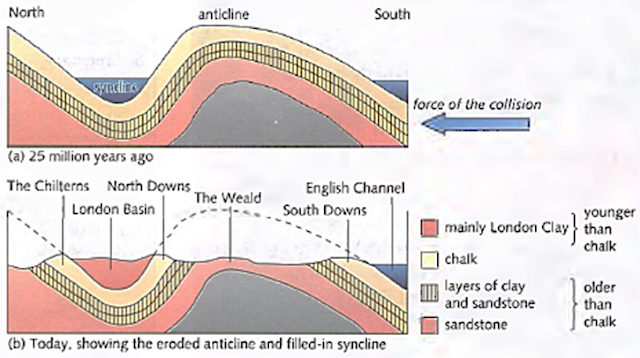Table of Contents
Introduction
We tend to think of the landscape as unchanging. However, it is slowly and continuously being reshaped. Usually, this reshaping of the landscape results into the production of soils. Soil is formed from the break-down of the parent materials by the process known as weathering. This is the result of climatic factors such as wind, water, temperature and sunshine. It is also due to action by chemicals. In this section, we shall discuss the various types of weathering processes.
Ad WEATHERING
Exposure to wind, rain and frost causes rocks to break apart and crumble. This is known as weathering. There are two main types of weathering: physical and chemical.
1. Physical weathering
Physical weathering includes the actions of wind, water and temperature. Rain water can collect in cracks in the rocks and freeze as the temperature drops. This causes expansion as the ice forms, forcing the crack apart. When the temperature rises, the ice melts, and again water fills the crack. This process of freeze-thaw weathering can be repeated over time, making the crack steadily wider until a boulder falls. Temperature changes also produce stresses in the rock because the different minerals present expand (in hot sunshine during the day) and contract (in the shade and at night) at different rates. Rocks and boulders will detach from a slope, causing scree.
 |
| Weathering process |
As seen above, in physical weathering the agents are: water, wind, temperature changes and ice.
Water: Running water carries away loose particle of rocks of different sizes and deposits them elsewhere. As the rock fragments are carried, they constantly rub against each other and the ground of the river bed. This wears away the ground and also the fragments themselves which become smaller.
Wind: Wind carries away dust particles, which are blown against rock surfaces, causing them to wear away. Frequently, wind removes loose material leaving the rock exposed to further weathering.
Temperature: Temperature changes can cause the expansion (on heating) and contraction (on cooling) of the various minerals, which the rock consists. Each of the minerals expands and contracts at different rates of different amounts according to their physical properties. This causes fractures to occur in the parent materials, which over a long period of time disintegrates.
Ice: As the temperature reach freezing point, water in the crevices and cracks of rocks freezes. The force of expansion of the ice causes the rock to crack further the shatter. When the temperature rises again, the ice melts and the pieces of rock shattered by the ice are carried away by the melting Ice. The movement of these pieces of rock causes further disintegration.
2. Chemical weathering
Natural rain water contains dissolved carbon dioxide and is therefore slightly acidic. This rain ‘water will very slowly dissolve rocks such as limestone:
limestone + rain water → calcium hydrogencarbonate
CaC03(s) + H20(1) + C02(aq) → Ca(HC03)2(aq)
This process will be increased by ‘acid rain’, which contains dissolved pollutants such as sulphur dioxide and oxides of nitrogen. Some minerals take up water and become hydrated. This causes expansion, and therefore stress, in rock formations. Fragments of rock are again broken off.
The material broken from rock structures by weathering can then be carried away by erosion.
Both the physical and chemical weathering, can be initiated by living organisms either in search for food or habitation (shelter). This form of weathering is sometimes referred to as biological weathering.
3. BIOLOGICAL WEATHERING
Plants and soil organisms also cause weathering. Plant roots grow into minute cracks in rocks and the chemical they produce result in some breakdown of the rocks.
Soil organisms such as termites, earth warms and bacteria have a considerable effect on soil formation.
